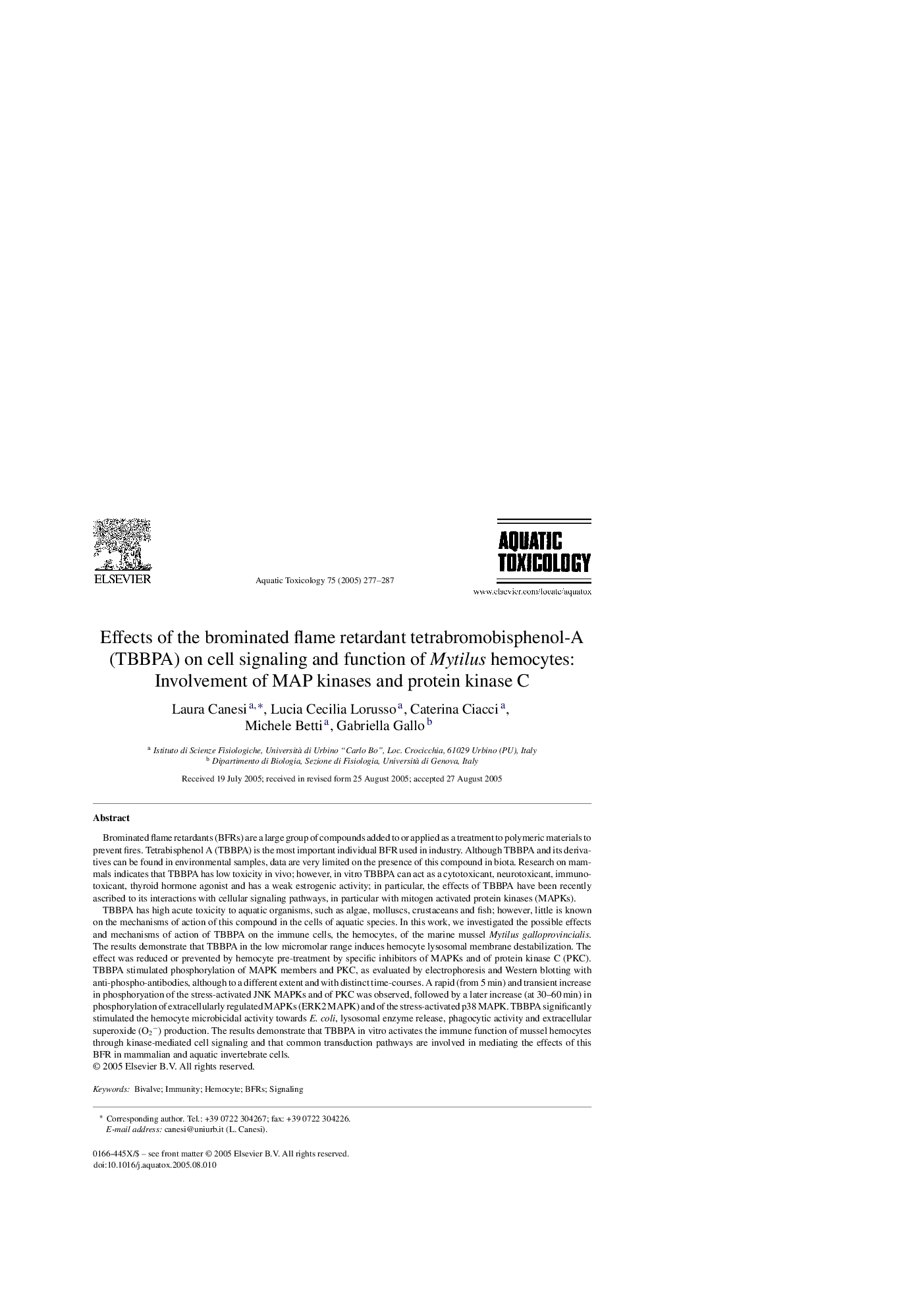| Article ID | Journal | Published Year | Pages | File Type |
|---|---|---|---|---|
| 9478205 | Aquatic Toxicology | 2005 | 11 Pages |
Abstract
TBBPA has high acute toxicity to aquatic organisms, such as algae, molluscs, crustaceans and fish; however, little is known on the mechanisms of action of this compound in the cells of aquatic species. In this work, we investigated the possible effects and mechanisms of action of TBBPA on the immune cells, the hemocytes, of the marine mussel Mytilus galloprovincialis. The results demonstrate that TBBPA in the low micromolar range induces hemocyte lysosomal membrane destabilization. The effect was reduced or prevented by hemocyte pre-treatment by specific inhibitors of MAPKs and of protein kinase C (PKC). TBBPA stimulated phosphorylation of MAPK members and PKC, as evaluated by electrophoresis and Western blotting with anti-phospho-antibodies, although to a different extent and with distinct time-courses. A rapid (from 5Â min) and transient increase in phosphoryation of the stress-activated JNK MAPKs and of PKC was observed, followed by a later increase (at 30-60Â min) in phosphorylation of extracellularly regulated MAPKs (ERK2 MAPK) and of the stress-activated p38 MAPK. TBBPA significantly stimulated the hemocyte microbicidal activity towards E. coli, lysosomal enzyme release, phagocytic activity and extracellular superoxide (O2â) production. The results demonstrate that TBBPA in vitro activates the immune function of mussel hemocytes through kinase-mediated cell signaling and that common transduction pathways are involved in mediating the effects of this BFR in mammalian and aquatic invertebrate cells.
Related Topics
Life Sciences
Agricultural and Biological Sciences
Aquatic Science
Authors
Laura Canesi, Lucia Cecilia Lorusso, Caterina Ciacci, Michele Betti, Gabriella Gallo,
